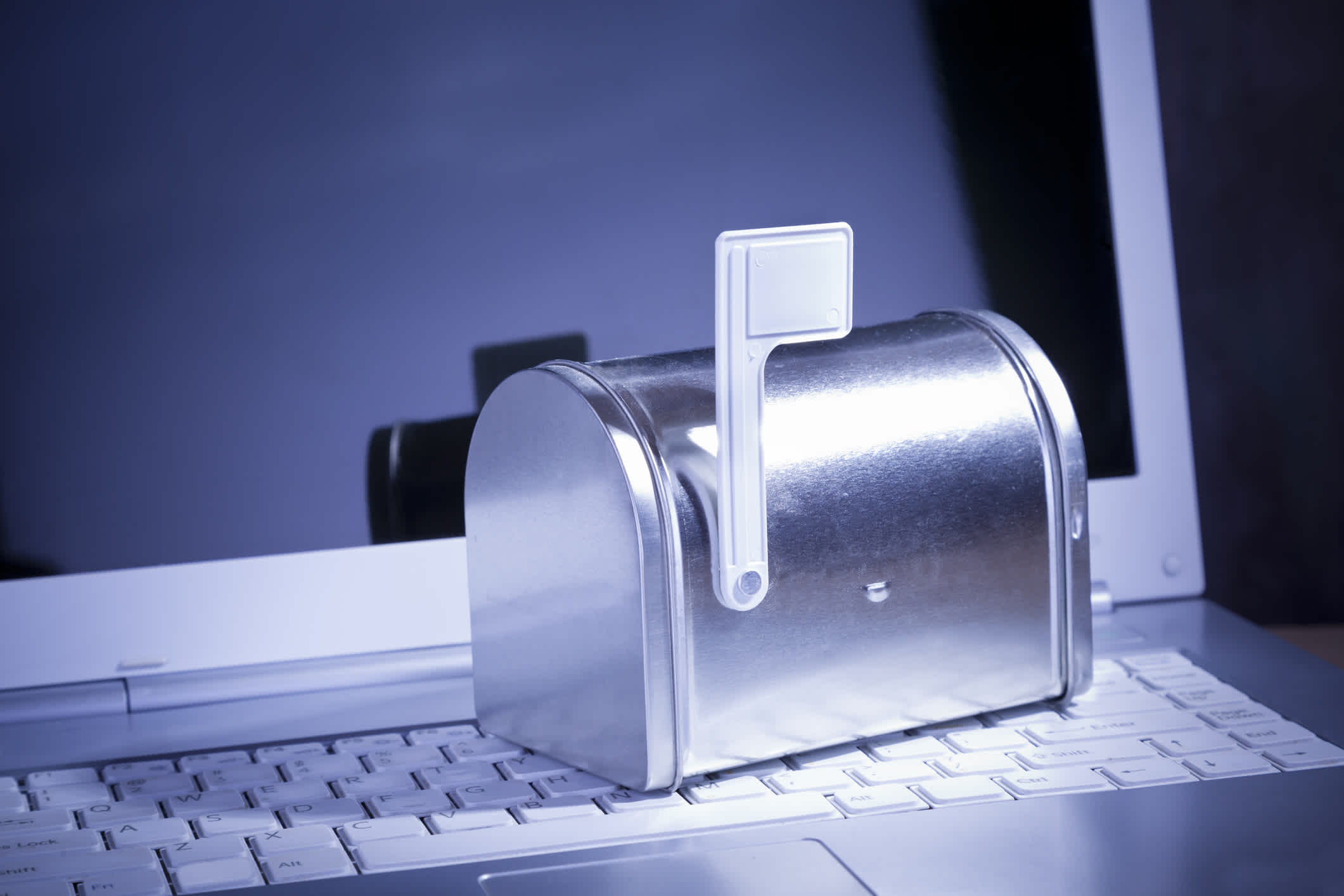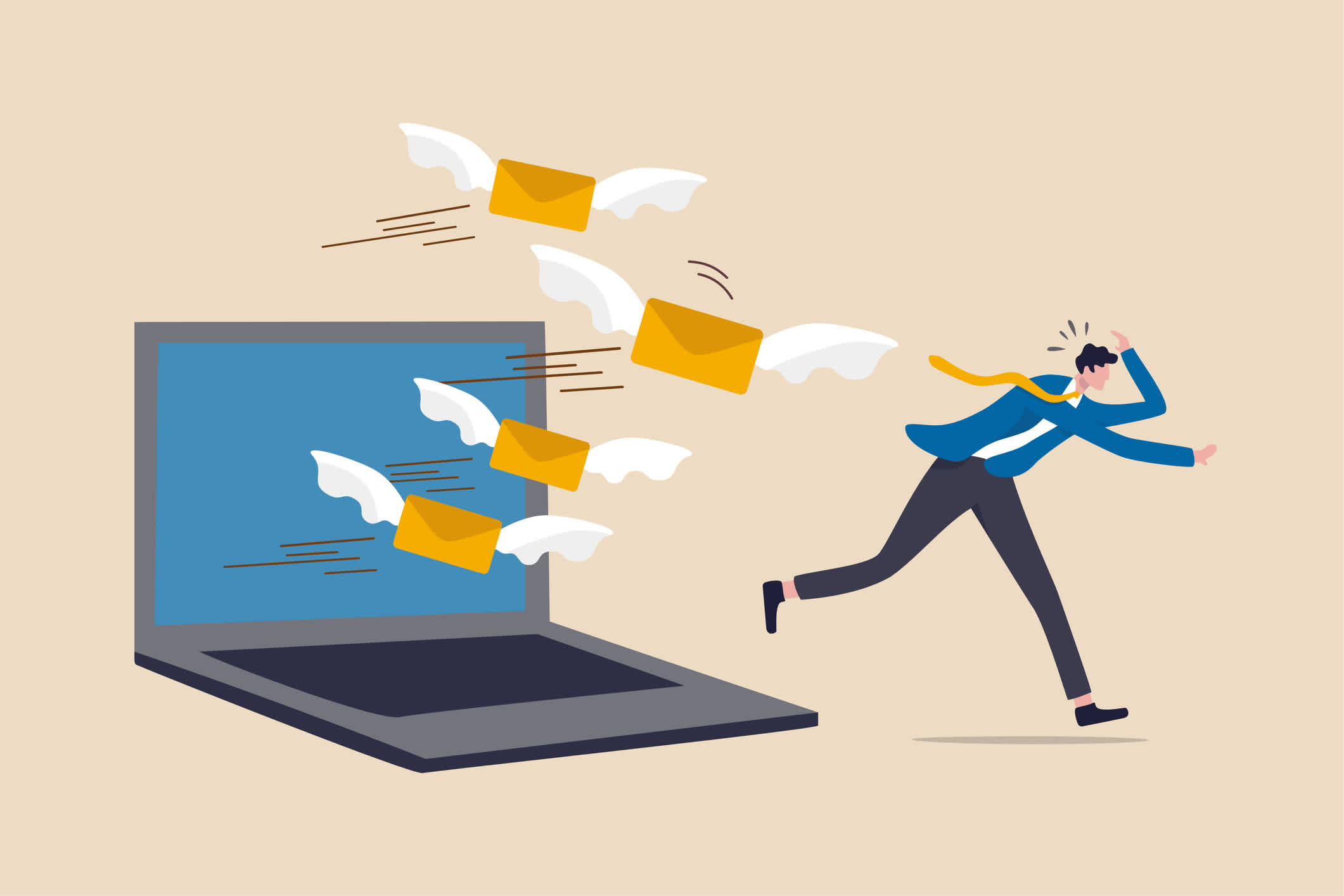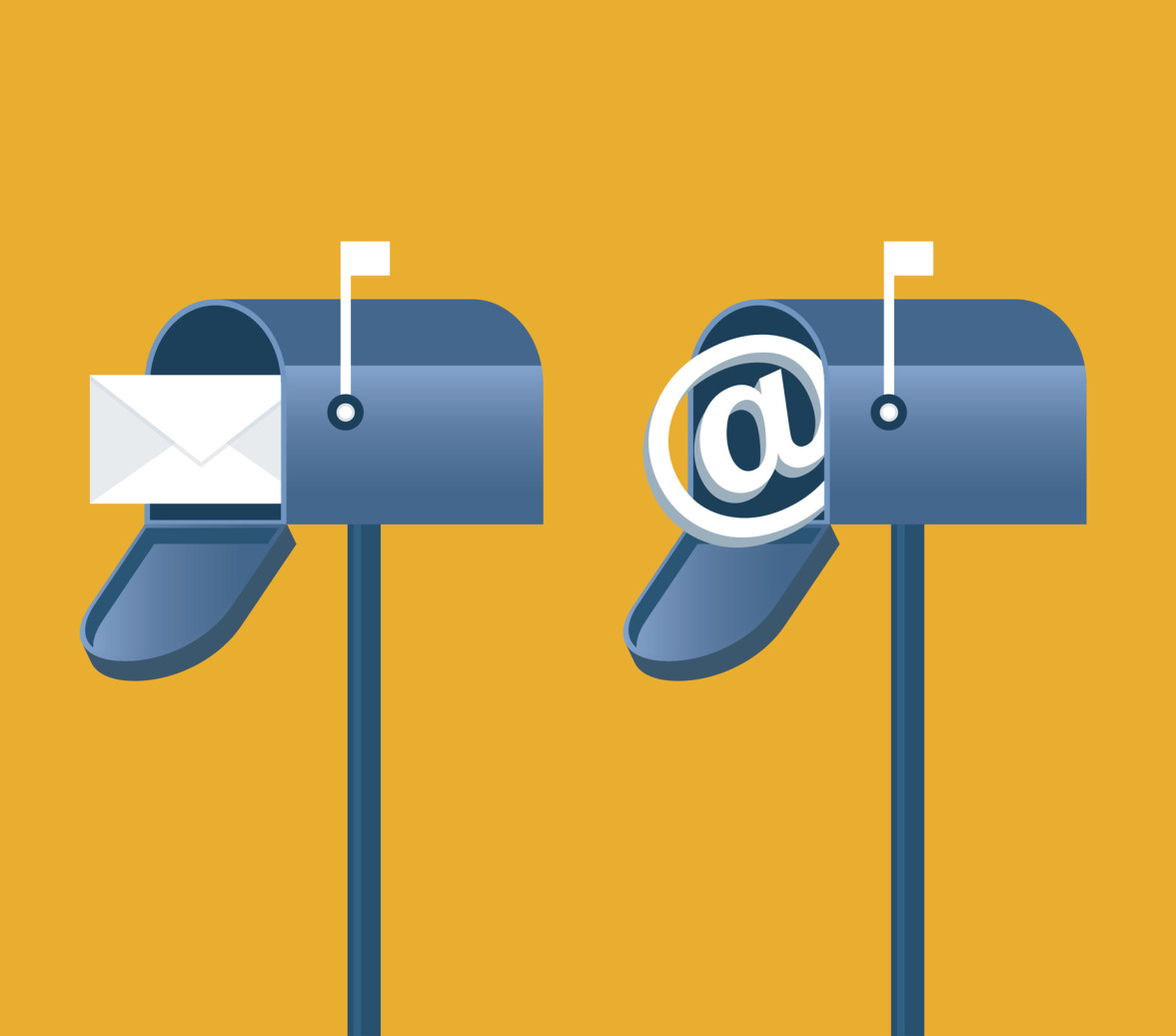//
Aug 22, 2023
Do Direct Mail Services Still Work in The Digital Age?
In today's hyper-connected digital world, where emails, social media ads, and online campaigns dominate the marketing landscape, it's easy to wonder whether traditional methods like direct mail services still hold any relevance.
The allure of the digital age lies in its speed, reach, and efficiency, but could there be a place for direct mail in this fast-paced environment?
Well, as the old saying goes (or my interpretation of it):
“One person’s trash is another person’s treasure.”
It all depends on what the value is for each individual who receives it. Some online marketers distribute “spam email.” With the thought that, “If we bombard enough people, someone, somewhere is bound to actually open it.” It’s a game of percentages.
Direct mail works on basically the same —the bigger the distribution, the better the chance of ROI, yet there’s much more to consider for a direct mail campaign to be successful. You want people to “treasure” your direct mail piece, rather than “trash” it—and that means background research.
The Benefits of Direct Mail Services

Amid the barrage of digital messages, direct mail stands out as a tangible and personal approach. Imagine receiving a beautifully designed, personalized piece of mail amidst a sea of electronic notifications.
This experience leaves a lasting impression on recipients, potentially leading to higher engagement rates. In fact, a study by the Direct Marketing Association found that the response rate for direct mail is significantly higher than email – .
In a world where inboxes are flooded with promotional emails, social media feeds are crammed with ads, and online banners compete for attention, the allure of direct mail services lies in its unique ability to cut through the digital noise. While the digital age has revolutionized marketing, there are enduring qualities of direct mail that continue to captivate audiences.
Tangibility and Unforgettable Impact
Imagine the feeling of holding a beautifully designed postcard, a thoughtfully curated catalog, or an elegantly packaged product sample in your hands. Unlike a fleeting digital message, a physical mail piece engages multiple senses, triggering emotions and creating a tangible connection.
The , the texture of the material, and even the scent of the ink contribute to a multisensory experience that can leave a lasting imprint on the recipient's memory.
The tangible nature of direct mail goes beyond just visual and tactile elements. A study conducted by found that direct mail engages parts of the brain associated with emotional processing and memory retention, resulting in stronger brand recall and a deeper connection to the message.
This emotional resonance can be a powerful tool in creating meaningful interactions with your target audience.
Personalization and Individual Attention
One of the strongest arguments in favor of direct mail services is the potential for high personalization. Modern technology allows marketers to harness data and insights to create tailored messages that resonate with individual recipients.
Variable data printing, for instance, empowers brands to customize not only the recipient's name but also the content, images, and offers based on the recipient's preferences, behaviors, and demographics.
This level of personalization goes beyond the standard segmentation in digital marketing. Direct mail recipients receive a message that feels uniquely crafted for them, elevating the perceived value of the communication.
Standing Out in the Inbox
In a world where the average person receives numerous , the physical nature of direct mail provides a refreshing contrast.
While emails often get lost in the crowded digital landscape or are relegated to spam folders, a well-designed direct mail piece demands attention simply by arriving in a recipient's mailbox. This exclusivity lends an air of importance to the message, enticing recipients to open, explore, and engage with the content inside.
Moreover, the decline of physical mail in recent years means that receiving a piece of mail has become a relatively rare occurrence. This scarcity further enhances the impact of direct mail campaigns, making them more memorable and likely to stand out in recipients' minds.
Integration of Traditional and Digital Marketing

In the ongoing debate between traditional and digital marketing, it's becoming increasingly clear that these two realms are not mutually exclusive, but rather complementary forces that, when harnessed together, can create a dynamic and holistic . This is where the concept of integrating direct mail services with digital strategies comes into play, showcasing the potential for both to amplify each other's impact.
In the digital age, consumers are seamlessly navigating between online and offline experiences. A potential customer might receive a direct mail piece one day and then engage with your brand through , email, or your website the next. Recognizing this fluidity, astute marketers are finding ingenious ways to blur the lines between the tangible and the digital, creating a unified brand experience that leaves a lasting imprint on the consumer's mind.
Creating Bridges with QR Codes
One of the most powerful tools in bridging this gap is the use of QR codes. QR codes, those enigmatic black-and-white patterns, have evolved beyond their novelty phase and are now being strategically employed as gateways between the physical and digital worlds.
By incorporating QR codes into your direct mail pieces, you provide recipients with a simple way to access online content directly from their smartphones. This could be a link to a product page, a promotional video, a survey, or even a designed exclusively for them.
Enhancing Engagement through Multimedia
Imagine receiving a beautifully designed direct mail piece that introduces a new product line. You're intrigued, and then you notice a QR code. Curiosity piqued, you scan it with your phone, and suddenly, you're immersed in a visually appealing video showcasing the products in action.
The experience has transitioned from static print to dynamic multimedia, capturing attention and engaging multiple senses. This fusion of traditional print and dynamic digital content not only captivates the audience but also provides an innovative way to educate and entertain simultaneously.
Fostering Consistency and Recall
Integrating direct mail with digital touchpoints also helps reinforce and recall.
In a world where the average consumer is bombarded with thousands of marketing messages daily, creating a cohesive and memorable is crucial. By aligning the look, feel, and messaging of your direct mail pieces with your digital assets, you ensure a cohesive brand experience that resonates across platforms.
This consistency reinforces your brand in the minds of consumers, making it more likely that they'll recognize and engage with your messaging in the future.
Measuring and Refining the Fusion
One of the remarkable advantages of integrating direct mail with digital strategies is the enhanced ability to measure and refine campaigns. While traditional direct mail campaigns could sometimes leave marketers wondering about their impact, the digital components bring a wealth of metrics.
From tracking QR code scans to analyzing time spent on video content and conversion rates, the digital realm provides a treasure trove of data. This data-driven approach allows marketers to make real-time adjustments, optimizing campaigns for maximum impact.
Measuring Effectiveness

In the realm of marketing, measurement is paramount. The ability to quantify the impact of your efforts provides insights into what's working, what needs improvement, and where to allocate resources for the best results. Measuring the effectiveness of direct mail campaigns has undergone a transformation, thanks to advancements in technology and innovative tracking methods.
Response Rates and Conversion Metrics
Traditionally, one of the primary ways to measure the success of direct mail campaigns was through response rates. The number of recipients who took the desired action, whether it's visiting a website, making a purchase, or filling out a form, was a key indicator of engagement.
In the digital age, this measurement still holds relevance, but it's now complemented by an array of additional metrics.
Tracking Tools for Direct Mail
Digital marketing introduced marketers to the world of data-driven decision-making, and direct mail has followed suit. Tracking mechanisms like personalized URLs (PURLs) and QR codes are akin to digital call-to-action buttons, allowing recipients to seamlessly transition from physical mail to online experiences.
By including a unique PURL or QR code on each direct mail piece, marketers can monitor who responded, when, and how, just as they would with an email campaign.
Multi-Channel Attribution

One of the challenges that both traditional and digital marketing methods face is multi-channel attribution. How do you attribute a conversion or sale to a specific channel when customers often interact with multiple touchpoints before making a decision?
This challenge is where the integration of direct mail with digital tracking becomes invaluable.
For example, imagine a scenario where a recipient receives a direct mail piece, visits the website using the provided QR code, and then makes a purchase. Through proper tracking, this multi-step journey can be attributed to the initial direct mail engagement, giving marketers a more holistic view of the customer's path to conversion.
ROI Tracking
Return on investment (ROI) is the ultimate litmus test of any marketing campaign's success. Calculating the ROI of a direct mail campaign has become more sophisticated with the inclusion of advanced tracking tools.
By tracking not only direct conversions but also the indirect impact of the campaign (e.g., increased brand awareness leading to later purchases), marketers can more accurately assess the value generated by their direct mail efforts.
Data Analytics for Continuous Improvement
The data generated from tracking direct mail campaigns isn't just a report card; it's a roadmap for improvement. By , marketers can identify patterns, preferences, and pain points in their campaigns.
For instance, if a certain type of offer consistently yields higher conversion rates, this insight can inform future campaign strategies. Likewise, if a specific demographic segment is unresponsive, adjustments can be made to tailor content to their preferences.
Tips for Successful Direct Mail Campaigns
To execute a successful direct mail campaign in the digital age, consider these tips:
1. Segmentation: Use data to segment your audience for personalized content.
2. Integration: Combine direct mail with online experiences using QR codes or personalized URLs.
3. Engaging Content: Craft compelling content that resonates with recipients and drives them to take action.
4. Measurement: Implement tracking mechanisms to measure the campaign's effectiveness.
5. Consistency: Ensure that your direct mail aligns with your overall brand and marketing message.
Bridging the Gap
In conclusion, direct mail services still have a place in the digital age. By leveraging its tactile and personalized nature and integrating it strategically with digital marketing efforts, companies can create impactful campaigns that stand out in a cluttered digital landscape.
The key lies in finding the right balance between the tangible and the virtual, capitalizing on the strengths of both worlds to drive engagement and results.
So, the next time you contemplate the efficacy of direct mail in the digital age, remember that sometimes, a well-crafted piece of mail can make a lasting impression that a fleeting digital ad might not.
As a in Denver, we strive to captivate your audience and elevate your brand through Smart Design and Creative Solutions. We believe marketing is a collaborative effort, achieved by practicing agility and working cohesively with your team, not for it. Using data-driven solutions, we implement the best practices necessary to help your business exceed KPIs.
today for a free consultation.







